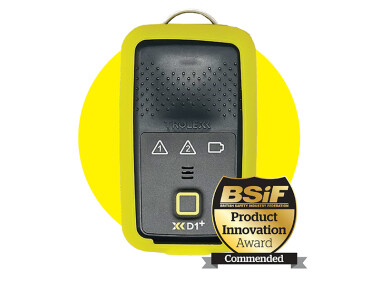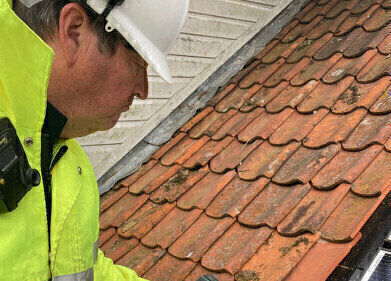Dust monitoring
Measure Dust Concentrations in Saturated Flue Gas
Sep 26 2008
or other low temperature processes. These are no suitable applications for in-situ dust monitoring because all optical monitors would recognize droplets and dust in the same way and the droplets would invalidate any dust measurement. A practical way to solve this problem is to extract the gas and to vaporize the droplets.
The D-R 820 F is designed by Durag (Germany) to measure dust concentrations in saturated flue gas containing water droplets using the forward-scattered light measuring principle. Any droplets are vaporized and thus cannot falsify the result of the measurement. The gas is withdrawn via a special sampling probe by means of an injector supplied by a blower. The representative measuring gas sample is extracted from the flue gas duct via a probe and conditioned before it is supplied to a scattered-light cell.
In the front part of the probe the sampled gas is mixed with clean, tempered dilution air in a defined way. Thus, it is possible to measure dust concentrations also with difficult exhaust conditions (wet gas, sticky constituents).
The D-R 820 F then uses the transmitter/receiver unit to measure the scattered-light intensity in the test cell as a measure of the dust concentration.
Operating principle: The sampling probe and the scattered-light cell form a construction unit. According to the respective measuring task the quantity of dilution air and the measuring gas temperature are adjusted in such a way that water drops are eliminated surely and the measuring signal is only a result of the solid particles.
The measuring gas flow is sucked with the help of an injector through the measuring cell, where flow monitoring by the measurement of the differential pressure over the measuring cell takes place. The D-R 820 F device operates according to the principle of forward scattering. The gas is m easured with a standard scattered light instrument in a special measuring cell, similar to those used for In-situ purposes. The concentrated and modulated light of a laser diode penetrates the measuring cell. The forward-scattered light largely reflected from dust particles is measured and assessed. Following this, the test gas is
returned to the duct.
A bypass valve is used in conjunction with the probe nozzle diameter to adjust the sampling rate to a slightly over-isokinetic sampling condition at full-load unit operation. Applications: Measuring dust concentrations, e.g. in saturated gas downstream of desulfurization plants; downstream of wet scrubbing plants, e.g. in waste incinerators; in wet exhaust gas from industrial processes or in applications with sticky types of dust.
The sample gas is forwarded via the ejector by means of a blower unit that also supplies the transmitter/receiver unit with purge air for keeping the optical boundary surfaces clean.
Applications are to be found in e.g.: chip board production; urea industry; insulating material production; behind wet scrubber and similar applications.
Digital Edition
AET 29.2 May 2025
May 2025
Water / Wastewater- From Effluent to Excellence: Microbiological assessment of a containerized modular water reuse pilot system- Without water everything comes to a haltAir Monitoring- Probe Sampli...
View all digital editions
Events
Jun 17 2025 Guangzhou, China
Singapore International Water Week Spotlight 2025
Jun 23 2025 Singapore
Jun 24 2025 Santa Clara, CA, USA
Jun 25 2025 Sao Paulo, Brasil
Jun 28 2025 Albena, Bulgaria












.jpg)






